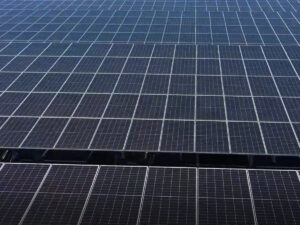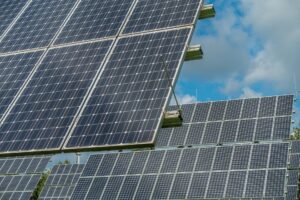As the world redoubles its efforts against climate change, solar energy is consolidating as one of the pillars of the energy transition. However, common technologies such as silicon panels and perovskite cells pose serious environmental challenges: they contain toxic materials that complicate their recycling and final disposal.
In this context, scientists have focused on a more ecological alternative: organic solar cells. These are composed solely of carbon-derived materials, so they can be incinerated without generating hazardous waste, similar to conventional plastics. Although their low efficiency has limited their use so far, a new breakthrough marks a turning point.
The development, led by Professor Masahiro Nakano from Kanazawa University, together with REIKO Co., Ltd. and Queen’s University (Canada), managed to double the efficiency of organic solar cells, reaching a record of 8.7%. The result, published in Advanced Functional Materials, represents a significant step towards the commercial viability of this clean technology.
Until now, the efficiency of these cells was around 4%, far below that of silicon panels (>27%) or perovskites (>26%). This improvement opens the door to their use in practical applications where conventional materials cannot compete.

Clean and Low-Impact Technology
The team achieved this improvement by combining two key innovations:
- PEDOT:PSS electrodes: This is an organic conductive material that can be manufactured at only 80 °C, without the need for aggressive acids or bases. This avoids damaging the delicate layers of the cells, maintaining a safer and less polluting production process.
- Lamination of carbon nanotubes: Instead of applying liquid inks that risk altering the lower layers, the researchers developed a lamination technique. The nanotube films adhere like a “label”, avoiding interferences and facilitating manufacturing.
Sustainable Applications: From Field to Body
These solar cells, lightweight, flexible, and free of heavy metals, have tremendous ecological potential and various emerging applications. They are ideal for agricultural land, where their installation does not interfere with cultivation, and for portable devices or even smart clothing, where weight and adaptability are essential.
Furthermore, by eliminating hazardous materials and allowing low-impact processes, these cells significantly reduce the costs and environmental risks of recycling.
Heading Towards Truly Green Energy
Although their efficiency still needs improvement, organic solar cells are emerging as a true ecological solution to the current energy challenge. They combine:
- Manufacturing without aggressive chemicals.
- Possibility of safe incineration.
- Adaptation to environments where other technologies fail.
- Low environmental impact and reduction of hazardous waste.
The research team will continue optimizing the electrodes and production processes, with the aim of competing in efficiency with traditional solar technologies. If successful, organic solar cells could transform the way we generate and manage energy, in a cleaner, safer, and more accessible manner.

Solar Energy Development in China is Driving a Historic Growth of Renewable Sources
Last year marked a milestone in global energy transition, with 92.5% of all new installed electricity coming from renewable sources such as sun, wind, and other clean energies, according to the International Renewable Energy Agency (IRENA).
This progress reflects unprecedented growth, although still insufficient to meet international goals.
Source: EcoInventos.

